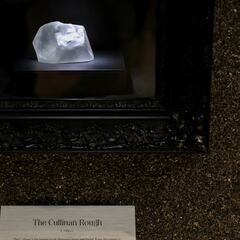What are ‘lab-grown’ diamonds? What are they made of?
Also known as synthetic diamonds, these minerals are produced artificially in controlled laboratory environments rather than being formed naturally.


The history of diamonds are soaked in blood. These blood diamonds gained international attention in the 1990s during civil wars in countries like Sierra Leone, Angola, and the Democratic Republic of Congo (DRC). Rebel groups in these countries seized control of diamond mines and used the proceeds from diamond sales to fund their military activities.
Diamonds do not need to be mined unethically. Another option is lab-grown diamonds which share the same chemical composition and physical properties as mined diamonds. However, due to the controlled conditions of their formation, lab-grown diamonds often have fewer inclusions and impurities than natural diamonds, and they can be produced with specific characteristics, more reliably and more predictably.
There are two primary methods used to produce lab-grown diamonds:
High Pressure-High Temperature (HPHT)
This method replicates the conditions under which natural diamonds are formed deep within the Earth’s mantle. Carbon source materials, typically graphite, are subjected to extremely high pressures and temperatures in a laboratory setting, causing them to crystallize into diamond over time.
Chemical Vapor Deposition (CVD)
In this method, a diamond seed, a small slice of natural or lab-grown diamond, is placed in a vacuum chamber, and a mixture of gases, typically methane and hydrogen, is introduced. These gases are ionized into plasma using microwaves or other energy sources, causing the carbon atoms to accumulate on the diamond seed and form a larger diamond crystal.
Advantages of lab-grown diamonds
Related stories
Lab-grown diamonds are conflict-free, meaning they are not associated with regions where diamond mining has funded conflict or contributed to human rights abuses.
As lab-grown diamonds are created in controlled environments, manufacturers have the ability to produce diamonds with specific characteristics, such as size, colour, clarity, and cut, with a high degree of precision and consistency.
